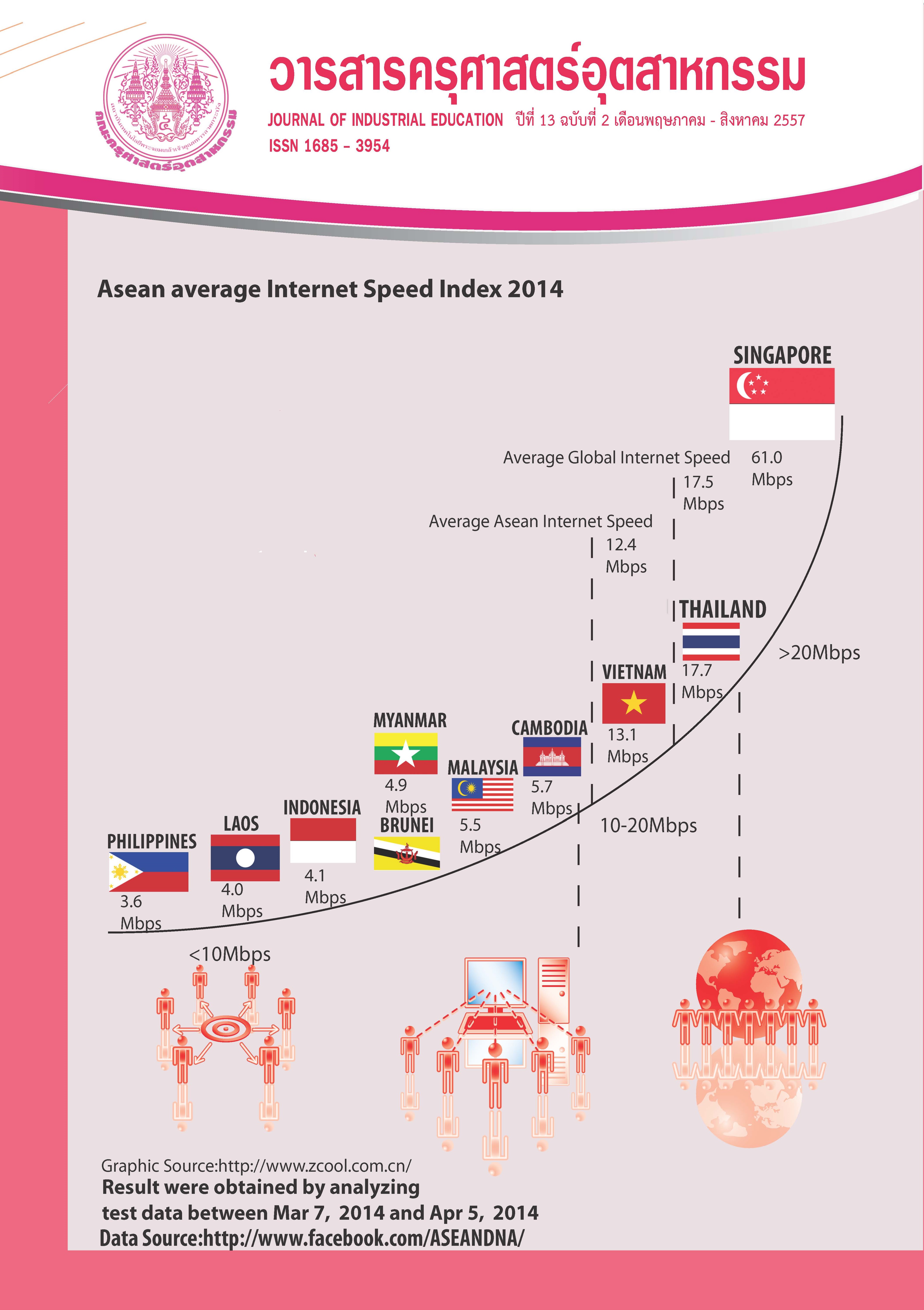Adding value to wetland plant fiber By design development process and production
Keywords:
adding value, wetland plants fiber, design development process, productionAbstract
The research focuses on adding value to wetland plant fiber by design development process and production. The research has three objectives: 1) research and development of wetland plant fibers in Thailand to select what material is suitable for textile processing. 2) development of wetland plant fibers for textile production with quality standards suitable for distribution. 3) design and development of wetland plant products to increase commercial value. This research process employed three methods, which are, combination of research and development, experimental research, and qualitative research. There were two samples based on the purpose of research. The first one is nine groups of handicraft manufacturers, registered in One Tampon One Product (OTOP) in 2010, using wetland plant fiber from provinces of Sisaket, Ubon Ratchathani, and Yasothon. And another is 375 Thai and foreign nationals at OTOP fair who are interested in handicraft to explore marketing needs. The samples were chosen based on Yamane’s (1973) statistical theory. The researcher employed interviews, experimental record, process observation, and questionnaire as a means to collect data. Then data analysis with statistical percentage, average, and standard deviation followed.
The research results showed there are five species of wetland plants that are appropriate for textile production of OTOP in Srisaket, Ubon Ratchathani, and Yasothorn provinces around the Mool and the Chee river, which are: 1) “Kok-Chan-Tha-Boon” (Cyperus corymbosus Rotth.). 2)“Kok-lang-Ka”or“Lhai”(Cyperus involucratus Rottb.) 3)“Kok-Sam-liam”or“phue”(Actinoscirpus grossus.) 4)“Thub-lu-Sri”(Typha angustifolia L.) and 5)“Toei-Nam”(Pandanus capusii Mart.) The researcher experimented them with five traditional methods for fiber processing: rolling, shredding, scarifying, beating, and boiling. We also used two new methods for fiber processing: scrape stripping, and peeling.
We also experimented various techniques for the development of wetland plants products, i.c. weaving, binding, knotting, knitting, and sewing. We found that each wetland plant fiber is suitable for different processing, and waste fiber and its dust could be recycled for handmade paper.
After design analysis, various sketching designs were selected by nine experts. These selected wetland plant product designs were: cushion, lamp, glass scene, coffee table, and basket. These five prototypes were evaluated by 375 participants and we found that highest score to the less one were : 1. glass scene (4.45) 2. cushion (4.28) 3. lamp (4.28) 4. coffee table ( 4.23) 5. basket (4.00). This research contributes to match products with suitable wetland plant fibers. Research also share the knowledge to OTOP communities of the researched area to increase the use of wetland plant products and their commercial value.
References
[2] สมบูรณ์ ตลุดกำ. (2553, 13 พฤษภาคม). สภาพการแปรรูปเสื่อ. [สัมภาษณ์ โดย จุฑาทิพย์ นามวงษ์].
[3] เกษิณี ผลประพฤติและคณะ. 2547. รายงานการวิจัยเรื่อง “การพัฒนาผลิตภัณฑ์เสื่อกกให้ได้มาตรฐานโดยการมีส่วนร่วมของชุมชนบางสระเก้า อำเภอแหลมสิงห์ จังหวัดจันทบุรี”. มหาวิทยาลัยราชภัฏรำไพพรรณี: จันทบุรี.
[4] บานเย็น วงเวียน. (2553, 7 กันยายน).สภาพการแปรรูปเสื่อ. [สัมภาษณ์ โดย จุฑาทิพย์ นามวงษ์].
[5] นงนภัส เพชรสุก. สภาพการตลาดงานหัตถกรรมเส้นใยพืชชุ่มน้ำ. (2555, 25 เมษายน). [สัมภาษณ์ โดย จุฑาทิพย์ นามวงษ์].
[6] ณัฐพงศ์ เกศมาริษ. 2546. การนำเสนอผลิตภัณฑ์ใหม่ = New Product Introduction, By J David, Viale. กรุงเทพฯ : เอ็กซเปอร์เน็ท.
[7] ธาดา สุทธิธรรม. 2553. การวิจัยและการเขียนบทความวิชาการทางศิลปะประยุกต์. อุบลราชธานี : โรงพิมพ์มหาวิทยาลัยอุบลราชธานี.
[8] ศักดิ์ชาย สิกขา. 2551. ต่อยอดภูมิปัญญาหัตถกรรมพื้นบ้าน. อุบลราชธานี : โรงพิมพ์มหาวิทยาลัยอุบลราชธานี. พิมพ์ครั้งที่ 2.
[9] กัลยกร จันทรสาขาและคณะ. 2554. ศึกษาการออกแบบผลิตภัณฑ์ศิลปหัตถกรรมประเภทงานจักสานไม้ไผ่ลายขิด กลุ่มผู้ผลิตบ้านหนองสระพัง ตำบลหนองห้าง อำเภอกุฉินารายณ์ จังหวัดกาฬสินธุ์. วารสารครุศาสตร์อุตสาหกรรม, 10 (3), น. 337-346.
[10] สิทธิศาณติ์ วชิรานุภาพ. 2542. ความเป็นไปได้ในการผลิตเยื่อกระดาษจากต้นธูปฤาษี. วิทยานิพนธ์ปริญญาวิทยาศาสตร์มหาบัณฑิต สาขาวิชาเทคโนโลยีที่เหมาะสมเพื่อการพัฒนาทรัพยากร บัณฑิตวิทยาลัย มหาวิทยาลัยมหิดล.
Downloads
Published
How to Cite
Issue
Section
License
"The opinions and contents including the words in papers are responsibility by the authors."
"ข้อคิดเห็น เนื้อหา รวมทั้งการใช้ภาษาในบทความถือเป็นความรับผิดชอบของผู้เขียน"



